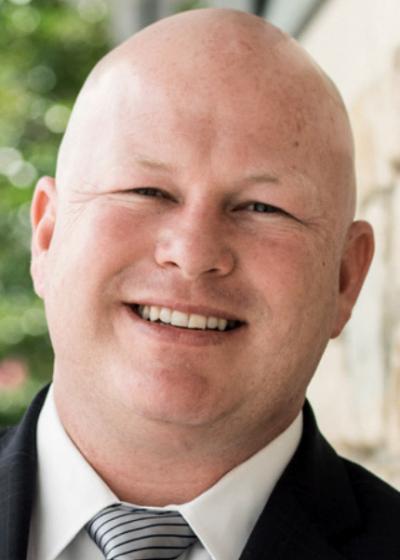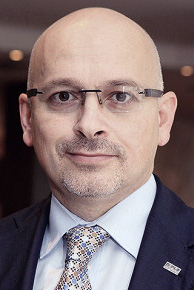

Cybersecurity |
Sponsored by |

|
The Network Time Protocol (NTP) has been in the news a number of times over the past couple of years because of attacks on the protocol, vulnerabilities in the daemon, and the use of NTP in DDoS attacks. In each case, the developers of NTP have responded quickly with fixes or recommendations for remediating these attacks. Additionally, the development team has continued to look ahead and has worked to enhance the security of NTP. Unfortunately, that has not translated to an improved security picture for NTP. more
 When 72 candidates vie for 8 positions, making tough choices are inevitable. ICANN's 2005 Nominating Committee (Nom-Com) on Friday announced the selection of a diverse and independent set of nominees for important roles in ICANN, including the Board of Directors, the Generic Names Supporting Organization (GNSO), the At-Large Advisory Council (ALAC) and the Country Code Names Supporting Organization (ccNSO). more
When 72 candidates vie for 8 positions, making tough choices are inevitable. ICANN's 2005 Nominating Committee (Nom-Com) on Friday announced the selection of a diverse and independent set of nominees for important roles in ICANN, including the Board of Directors, the Generic Names Supporting Organization (GNSO), the At-Large Advisory Council (ALAC) and the Country Code Names Supporting Organization (ccNSO). more
 As part of Verisign's ongoing effort to make global internet infrastructure more secure, stable, and resilient, we will soon make an important technology update to how we protect the top-level domains (TLDs) we operate. The vast majority of internet users won't notice any difference, but the update will support enhanced security for several Verisign-operated TLDs and pave the way for broader adoption and the next era of Domain Name System (DNS) security measures. more
As part of Verisign's ongoing effort to make global internet infrastructure more secure, stable, and resilient, we will soon make an important technology update to how we protect the top-level domains (TLDs) we operate. The vast majority of internet users won't notice any difference, but the update will support enhanced security for several Verisign-operated TLDs and pave the way for broader adoption and the next era of Domain Name System (DNS) security measures. more
The Internet Corporation for Assigned Names and Numbers organization (ICANN org) announced that all of the current 1,195 generic top-level domains (gTLDs) have deployed Domain Name System Security Extensions (DNSSEC). more
 One of the most interesting and important changes to the internet's domain name system (DNS) has been the introduction of the DNS Security Extensions (DNSSEC). These protocol extensions are designed to provide origin authentication for DNS data. In other words, when DNS data is digitally signed using DNSSEC, authenticity can be validated and any modifications detected. more
One of the most interesting and important changes to the internet's domain name system (DNS) has been the introduction of the DNS Security Extensions (DNSSEC). These protocol extensions are designed to provide origin authentication for DNS data. In other words, when DNS data is digitally signed using DNSSEC, authenticity can be validated and any modifications detected. more
 Computer security costs money. It costs more to develop secure software, and there's an ongoing maintenance cost to patch the remaining holes. Spending more time and money up front will likely result in lesser maintenance costs going forward, but too few companies do that. Besides, even very secure operating systems like Windows 10 and iOS have had security problems and hence require patching. (I just installed iOS 10.3.2 on my phone. It fixed about two dozen security holes.) more
Computer security costs money. It costs more to develop secure software, and there's an ongoing maintenance cost to patch the remaining holes. Spending more time and money up front will likely result in lesser maintenance costs going forward, but too few companies do that. Besides, even very secure operating systems like Windows 10 and iOS have had security problems and hence require patching. (I just installed iOS 10.3.2 on my phone. It fixed about two dozen security holes.) more
New report released today finds 75 percent of malicious websites are from legitimate, trusted sources with "Good" reputation scores. According to the report, 60 percent of the top 100 most popular websites either hosted malicious content or contained a masked redirect to lure unsuspecting victims from legitimate sites to malicious sites. more
Contrary to conventional wisdom, the vast majority of business and IT executives report that cloud computing is a viable technology option that can improve a company's bottom-line results according to a new global survey conducted by an independent market research firm. However, despite growing evidence that cloud-based systems have the potential to lower costs, the majority of companies report no plans to integrate cloud computing in the next 12 months... more
 Feb. 3, 2011, came and went without much fanfare, but it was a milestone for Internet stakeholders, whether they knew it or not. On that Thursday, the last available IPv4 addresses were allocated by the Internet Assigned Numbers Authority (IANA). Though some Regional Internet Registries (RIRs) have a reasonable inventory of IP addresses that could last another year or two, the days of "new" IPv4 address allocations are largely over. more
Feb. 3, 2011, came and went without much fanfare, but it was a milestone for Internet stakeholders, whether they knew it or not. On that Thursday, the last available IPv4 addresses were allocated by the Internet Assigned Numbers Authority (IANA). Though some Regional Internet Registries (RIRs) have a reasonable inventory of IP addresses that could last another year or two, the days of "new" IPv4 address allocations are largely over. more
 The year 2010 is turning out to be the "year of DNSSEC" from Registry implementations, Registrar implementations, ISP support, to the Root being signed this summer. Because we are dealing with such critical infrastructure, it is important to not lose sight of careful implementations. more
The year 2010 is turning out to be the "year of DNSSEC" from Registry implementations, Registrar implementations, ISP support, to the Root being signed this summer. Because we are dealing with such critical infrastructure, it is important to not lose sight of careful implementations. more
The United States is under cyber-attack. An article in Time magazine titled "The Invasion of the Chinese Cyberspies" discusses a computer-network security official for Sandia National Laboratories who had been "tirelessly pursuing a group of suspected Chinese cyberspies all over the world." The article notes that the cyberespionage ring, known to US investigators as Titan Rain, has been "penetrating secure computer networks at the country's most sensitive military bases, defense contractors and aerospace companies." more
The House Committee on Science recently held a hearing to "examine the extent of U.S. vulnerability to cyber attacks on critical infrastructure such as utility systems, and what the federal government and private sector are doing, and should be doing, to prevent and prepare for such attacks." Specific issues addressed at the hearing included whether: 1) the U.S. is able to detect, respond to, and recover from cyber-attacks on critical infrastructure; and 2) is there a clear line of responsibility within the federal government to deal with cybersecurity... more
 This is an overview of the booklet, "Internet Governance: Issues, Actors and Divides," recently published by DiploFoundation and the Global Knowledge Partnership. "Internet Governance is not a simple subject. Although it deals with a major symbol of the DIGITAL world, it cannot be handled with a digital - binary logic of true/false and good/bad. Instead, the subject's many subtleties and shades of meaning and perception require an ANALOGUE approach, covering a continuum of options and compromises." Update: This article was reposted with additional information and a new title. more
This is an overview of the booklet, "Internet Governance: Issues, Actors and Divides," recently published by DiploFoundation and the Global Knowledge Partnership. "Internet Governance is not a simple subject. Although it deals with a major symbol of the DIGITAL world, it cannot be handled with a digital - binary logic of true/false and good/bad. Instead, the subject's many subtleties and shades of meaning and perception require an ANALOGUE approach, covering a continuum of options and compromises." Update: This article was reposted with additional information and a new title. more
 As we, here in the United States celebrate our independence this Fourth of July, we are reminded that the liberties and freedoms that come with that independence have yet to be won online. As citizens of this country we are blessed with safety and security from threats both foreign and domestic, but those guarantees have not yet extended to our citizenship in the global Internet community. This is true not just for American citizens, but for all Internet users throughout the world. more
As we, here in the United States celebrate our independence this Fourth of July, we are reminded that the liberties and freedoms that come with that independence have yet to be won online. As citizens of this country we are blessed with safety and security from threats both foreign and domestic, but those guarantees have not yet extended to our citizenship in the global Internet community. This is true not just for American citizens, but for all Internet users throughout the world. more
Authorities across 18 African nations, aided by the United Kingdom and INTERPOL, have arrested 1,209 suspects and dismantled over 11,000 illicit cyber infrastructures. more